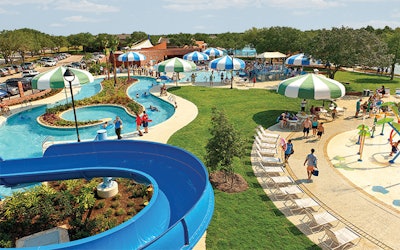
Aquatic environments come in a variety of shapes, settings and sizes, from a 10-foot backyard aboveground that barely fits the whole family to a resort waterpark serving over a million visitors in a single season.
And yet, it's still just water.
We asked Kent Wood, P.E., engineering manager at Water Technology, a company that designs and engineers aquatic megaprojects the world over, how the process of achieving a massive waterpark compares to a 12-by-20-foot package pool.
KW: The basic water treatment system is the same. You have a pump, a filter, a heater, chemical feed and you go back out to the pool. But the big difference is the amount of technology and automation to do each of these things.
For instance, both the backyard pool and the huge waterpark use chlorine to treat the water, but in a small pool the chlorine might be manually fed — you might have someone sprinkling in granular chlorine — whereas the big project has to use automatic feeders.
In our company we have five departments:
1) We have business development people who are talking to clients to help define their dreams.
2) We have a creative group that is trying to figure out how take these dreams and turn them into something buildable.
3) Then we have a group of engineers and project managers who are figuring out how to take that concept on paper and actually make it happen. Turn it into reality.
4) There is a group of mechanical designers who are working on filtration and water distribution, and
5) A group of technical designers that are putting in all the details — everything you see in pictures of the project.
Although that's the same process you see in smaller pool projects, there won't be five different groups doing it. In some cases, there may only be one person.
Q: The group building the dream — do they talk with the clients about their dream, and then run down the hall to the engineers and ask them if this dream can be done?
KW: (Laughs) No, they just say it can be done and then later tell us to figure out how to do it!
Q: When they come to you with a dream they want to make real, do you ever think at first, "No," and then a week later think, "Well, maybe."
KW: Yeah, we're always thinking about ways to make it work. We're always thinking about that.
Q: What are you working on right now?
KW: We do about 100 projects a year. Maybe three to six mega-projects per year, like the Universal Studios Waterpark in Orlando — that's a big one we're working on right now.
We do the design, and we have strategic partnerships with a few builders who we team up with on design/build work for the big stuff.
Comments or thoughts on this article? Please e-mail [email protected].
Water Technology is a worldwide leader in waterpark design and engineering, with offices located in Beaver Dam, Wisc.







































